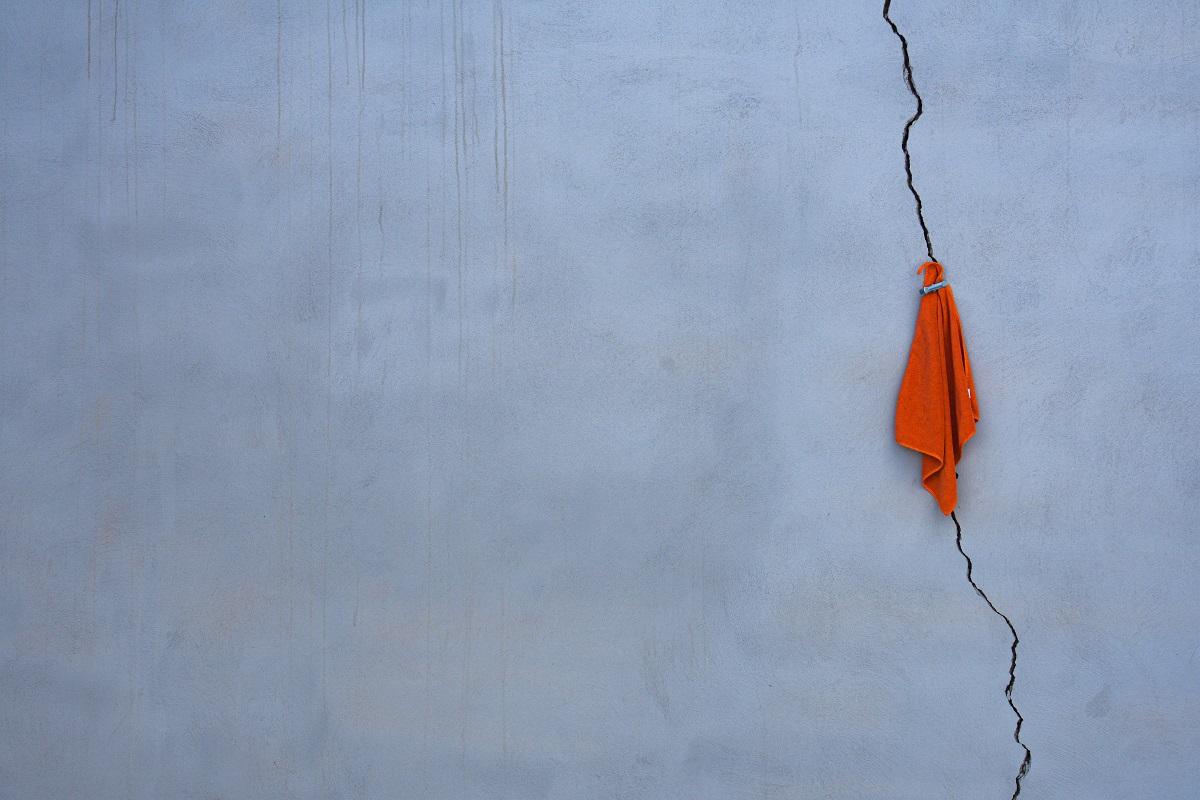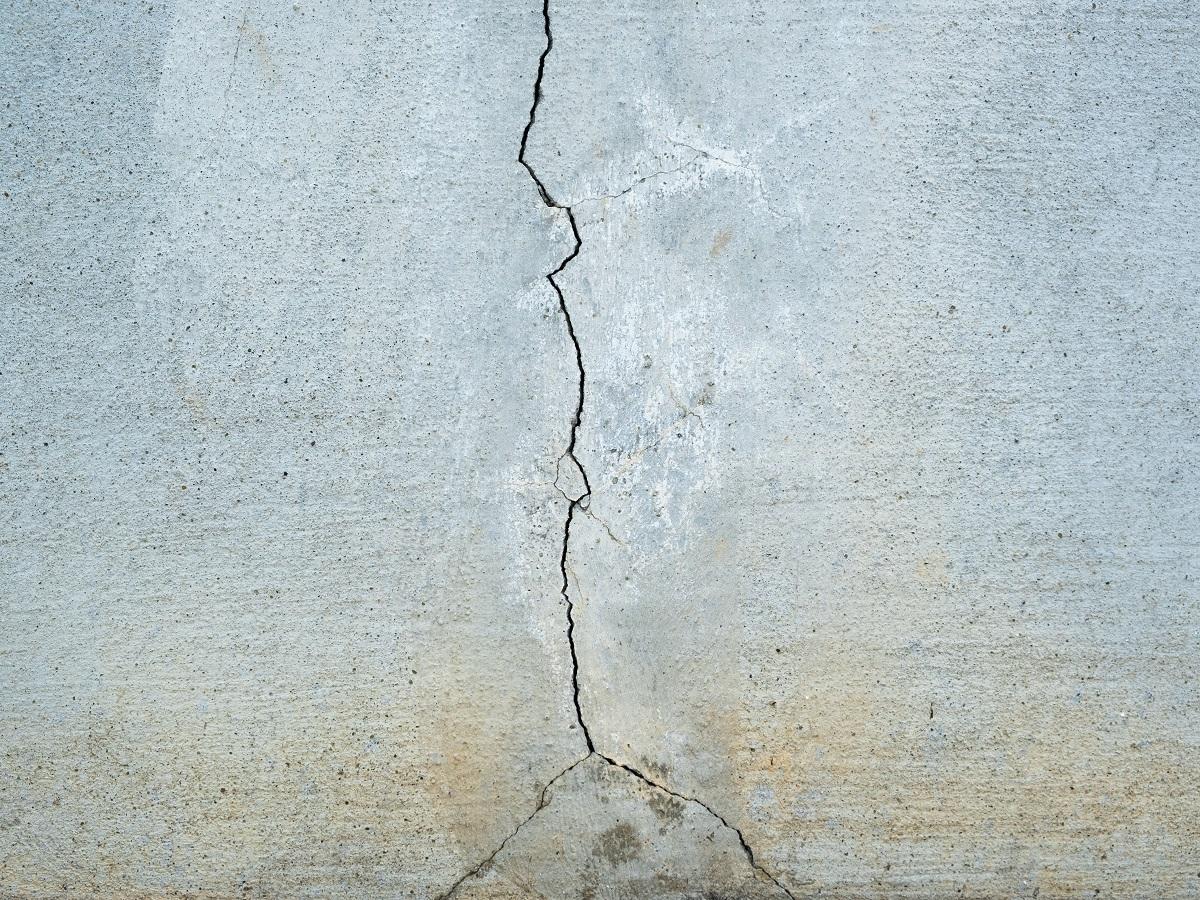The foundation supports an entire house, and it is essential that you use only the best concrete crack filler if you notice any cracks in it.

Cracks in foundation may appear for a number of reasons, and they will make your building look shabby. And, unless you treat the foundation problem on time, you might see bulging walls and in the worst-case scenario, the building might lose its structural integrity.
So, we suggest that you keep a regular check on the foundation wall and take note of any cracks, and use only the best crack filler to fix the issue. This will block any crawl space from water and won’t allow the concrete to contract or expand.
However, that’s not it! There are a range of other things that you can do to fix cracks in a foundation wall and we will tell you all about them.
So, let’s take a look!
Things To Do To Fix Crack In Foundation Wall

1. Inspecting Your Foundation Cracks
Can old concrete be resurfaced? We get this question a lot and before we give an answer, we will take you through the reasons behind it.
There are plenty of reasons behind a cracked foundation wall. And, to fix it, you need to find out why it is appearing in the first place.
When there are instances of too much water, it starts to infiltrate the foundation walls. This phenomenon makes the concrete walls contract and expand when there’s a change in temperature. Alternatively, you might be in a situation where you find that the soil beside the foundation has settled. Together, factors like these weaken the concrete, leading to crack formation.
And, once the cracks start appearing, there is no stopping. Over time they continue to grow, and if you leave them for too long, they might become a severe problem. The reason behind a foundation crack can be easily identified if you take a close look at it. If you see horizontal cracks, they are most likely caused by settling soil.
Also, you might be in a situation where you find too much moisture around the foundation. This leads to water infiltrating the concrete, seeping through it to the other side of the basement floors. And, in the worst-case scenario, the water may start to create pressure on the foundation walls, resulting in vertical foundation cracks.
But, rest assured, cracks caused by these factors are mostly hairline cracks and won’t cause problems if treated on time.
2. Preparations For Repair
Before you learn how to repair foundation cracks, it is crucial to get yourself acquainted with how to prepare for the process.
Get your hands on a flathead screwdriver or a stiff wire brush to clear off any loose material and broken bits of concrete around the crack. In order to ensure that the adhesive works properly, use a chisel and hammer to broaden the crack and cut under the cracked edges. This will provide more area for the patch to stick when the adhesive is applied.
Once you are done with these steps, get a garden hose and clean the crack with water.
3. Fixing Hairline Cracks
Unlike fixing structural cracks, hairline ones are pretty easy to mend. If you notice one, go to the local supermarket and get your hands on some patching compound and vinyl concrete. To ensure that the bond between the patching material and the old surface is top-notch, you can consider applying concrete bonding adhesive.
After that, you can use an old paintbrush and apply the liquid to the cracks and around the edges. Next, you can use a putty knife and apply the patching compound in layers. And, while you are at it, do not forget to push the first layer into the cracks. For a long-lasting hold, we recommend that you allow drying time between applying each layer.
If you are not looking to follow such a lengthy process, you can consider going for a quick fix. You can make a cement mixture for fixing foundation cracks. In case you notice that the crack you are trying to fix is wide, consider adding some sand to the cement mixture. For that, you will need to mix one part of cement with three parts of sand and add enough water to make a thick paste.
In another container, mix cement and water to make a runny cement paint that you will have to use like a primer. Once the primer has dried off, you will have to apply the mixture properly into the cracked foundation. For this, it is best to use a putty knife. Next, you will require a flat-headed tool to flatten the mixture.
Ensure that you leave the patch undisturbed for an hour before blending it correctly with the surrounding area with the help of a float. However, if you are on the lookout for quicker fixes, consider using an epoxy seal instead.
4. Repairing Larger Cracks
Not all cracks are of the hairline width, and some may even be wider. And, to fix a crack like that, you will need to be equipped with caulking materials like silicone, polyurethane, or latex concrete caulk. It is best to use a caulking gun to fill the cracks with it.
This method is very effective as it fills up the entire crack and does not allow the concrete to expand or contract due to changes in weather. After you are done applying, let it rest for a while and dry up. If you notice that the caulk has contracted and has not filled up the entire crack, you will need to reapply.
A structural engineer would attest to the fact that this method is extremely suitable for treating both horizontal and vertical cracks.
That said, while inspecting a crack, you might notice that it is wider than ½ inch. In such cases, you will need to use foam backer rods in addition to the concrete caulk. A foaming rod will act as a great support to the patch and will prevent it from sinking into the crack with time.
However, keep in mind that it should be placed ¼ inches below the surface. To fix the rod in place, you will have to use a putty knife to insert it into the crack. After you are sure that the foam rods are placed correctly, you can fill up the crack with caulk or apply a vinyl patching.
How To Fix Crack In Foundation Wall Frequently Asked Questions ?
How to use hydraulic cement to fix foundation cracks?
Using hydraulic cement is a great way to fix shrinkage cracks and stair step cracks. To use this repair method, you will first need to get your hands on a packet of hydraulic cement. Begin by mixing the cement with water in a container to make a gooey paste.
Once you are done preparing the mix, proceed to dampen the cracks using a spray bottle. After that, swiftly insert the mixture into the cracks using a putty knife. Now that the major work is completed, you will have to let the layer dry before applying a pure layer of cement over the crack.
If you use hydraulic cement to fix the crack, the structural integrity of the foundation wall will stay intact.
Is sealing foundation walls necessary?
Filling the cracks with cement mixture and using patches won’t be enough unless you apply a proper sealant. For this, you can use a waterproof masonry sealer which will last for a long time.
A sealant is very crucial to prevent water from infiltrating the concrete and putting additional pressure on it. To apply the sealant easily, you can use a paintbrush and apply the coating directly over the dried patch. Once the first coat has dried, you can use a larger brush or consider using a masonry roller to apply another layer.
A lot of times, people wonder why cement cracks even after applying fillers. And, in most cases, this happens when they do not apply the sealant correctly or when the sealant is too runny.
Experts suggest that applying sealant on the entire surface is a pretty good idea as well.

How To Fix Crack In Foundation Wall Final Words
It is important to keep in mind that to prevent structural damage, you should try to prevent water infiltration to the best of your capabilities. To avoid foundation problems, also keep a regular check on the downspouts and gutters to see if they are functioning optimally.
Be it a horizontal crack or a vertical one, you must attend to it as soon as you can to prevent it from becoming a major problem. Small cracks may seem harmless in the beginning, but when left unattended, they soon expand in size.
We hope that the suggestions we have talked about in this guide come to help if your foundation walls develop cracks. And, if you liked reading this guide, do not forget to keep a watch on this space for more such reads.
Fixing cracks in foundation wall is not an easy job; likewise, figuring new clay sculpting ideas is not easy as well. Checkout our next article on finding clay sculpting ideas to enhance your DIY knowledge pool.
Until next time, take care!
